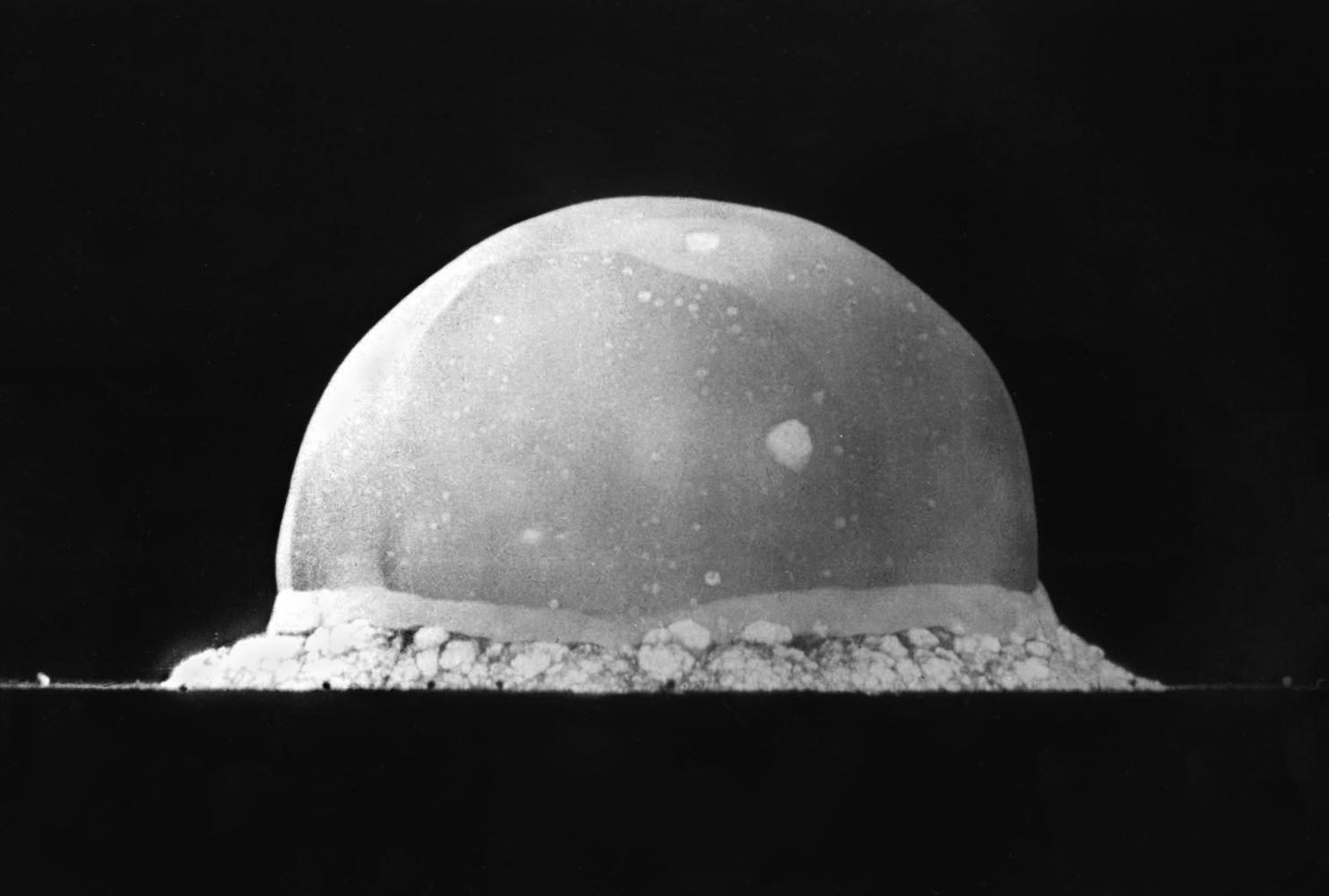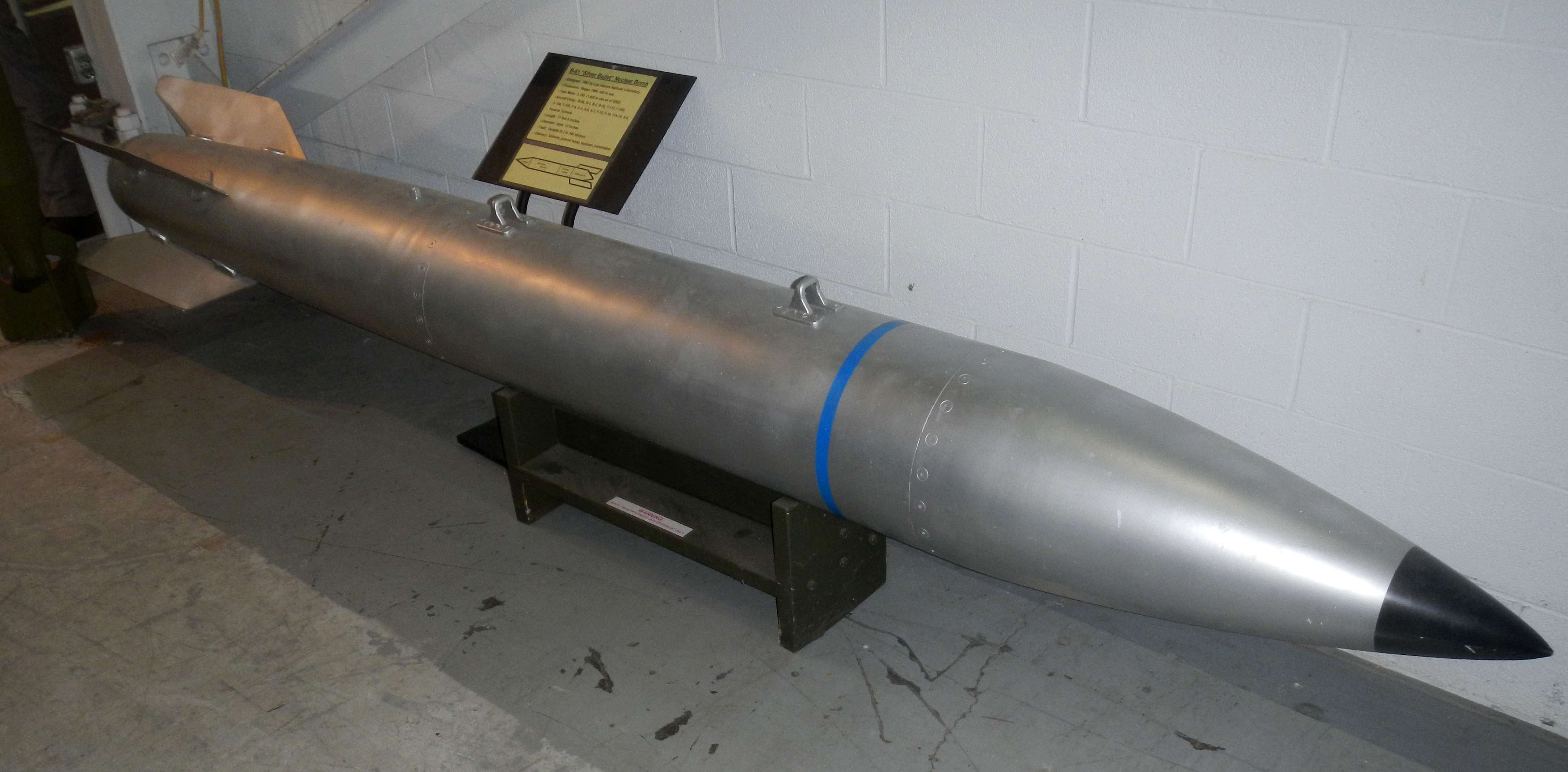|
W73 (nuclear Warhead)
The W73 was a planned nuclear warhead for the AGM-53 Condor air to surface missile and designed by Los Alamos Scientific Laboratory (now Los Alamos National Laboratory). The W73 warhead was cancelled in 1970 in favor of a purely conventional warhead for Condor. Condor was approved for production in 1975 with a expected production run of 250 missiles, but was cancelled in early 1976 due to high cost. The weapon was reportedly derived from the B61 nuclear bomb and had a diameter of . Condor was to weigh at launch and carry a warhead. It is unclear if the weight given is for the conventional or nuclear-armed version of the Condor. See also * List of nuclear weapons * B61 Family The B61 Family is a series of nuclear weapons based on the B61 nuclear bomb. B61 nuclear bomb Initial development The B61 bomb was developed by Los Alamos Scientific Laboratory (LASL; now Los Alamos National Laboratory) starting in 1960. The inte ... References Nuclear warheads of the United States [...More Info...] [...Related Items...] OR: [Wikipedia] [Google] [Baidu] |
Nuclear Bomb
A nuclear weapon is an explosive device that derives its destructive force from nuclear reactions, either fission (fission or atomic bomb) or a combination of fission and fusion reactions (thermonuclear weapon), producing a nuclear explosion. Both bomb types release large quantities of energy from relatively small amounts of matter. Nuclear bombs have had yields between 10 tons (the W54) and 50 megatons for the Tsar Bomba (see TNT equivalent). Yields in the low kilotons can devastate cities. A thermonuclear weapon weighing as little as can release energy equal to more than 1.2 megatons of TNT (5.0 PJ). Apart from the blast, effects of nuclear weapons include firestorms, extreme heat and ionizing radiation, radioactive nuclear fallout, an electromagnetic pulse, and a radar blackout. The first nuclear weapons were developed by the Allied Manhattan Project during World War II. Their production continues to require a large scientific and industrial complex, prim ... [...More Info...] [...Related Items...] OR: [Wikipedia] [Google] [Baidu] |
AGM-53 Condor
In 1962, the U.S. Navy issued a requirement for a long-range high-precision air-to-surface missile. The missile, named the AGM-53A Condor, was to use a television guidance system with a data link to the launching aircraft similar to the system of the then projected AGM-62 Walleye. Development history Because of numerous problems in the development phase, the first flight of an XAGM-53A missile did not occur before March 1970. On 4 February 1971, in its first live warhead test, a Condor made a direct hit on the ex-US navy destroyer escort , while tests later that year demonstrated the ability to hit targets at a range of .Pretty 1976, p. 149. The AGM-53 program was cancelled in March 1976. Its long range and potentially high precision made the Condor a very powerful weapon, but it was much more expensive than contemporary tactical air-to-ground weapons. The secure data link contributed a significant portion to total missile cost, and it certainly didn't help that this link was st ... [...More Info...] [...Related Items...] OR: [Wikipedia] [Google] [Baidu] |
Los Alamos National Laboratory
Los Alamos National Laboratory (often shortened as Los Alamos and LANL) is one of the sixteen research and development Laboratory, laboratories of the United States Department of Energy National Laboratories, United States Department of Energy (DOE), located a short distance northwest of Santa Fe, New Mexico, in the Southwestern United States, American southwest. Best known for its central role in helping develop the First Atomic bomb, first atomic bomb, LANL is one of the world's largest and most advanced scientific institutions. Los Alamos was established in 1943 as Project Y, a top-secret site for designing nuclear weapons under the Manhattan Project during World War II.The site was variously called Los Alamos Laboratory and Los Alamos Scientific Laboratory. Chosen for its remote yet relatively accessible location, it served as the main hub for conducting and coordinating nuclear research, bringing together some of the world's most famous scientists, among them numerous Nobel ... [...More Info...] [...Related Items...] OR: [Wikipedia] [Google] [Baidu] |
B61 Nuclear Bomb
The B61 nuclear bomb is the primary thermonuclear weapon, thermonuclear gravity bomb in the United States Enduring Stockpile following the end of the Cold War. It is a low-to-intermediate yield strategic nuclear weapon, strategic and tactical nuclear weapon featuring a two-stage radiation implosion design. The B61 is of the variable yield ("dial-a-yield" in informal military jargon) design with a yield of 0.3 to 340 kilotons in its various mods ("modifications"). It is a Full Fuzing Option (FUFO) weapon, meaning it is equipped with the full range of fuzing and delivery options, including air and ground burst fuzing, and free-fall, retarded free-fall and Laydown delivery, laydown delivery. It has a streamlined casing capable of withstanding supersonic flight and is long, with a diameter of about . The basic weight of the B-61 is about , although the weights of individual weapons may vary depending on version and fuze/retardation configuration. As of 2020, the weapon was undergoin ... [...More Info...] [...Related Items...] OR: [Wikipedia] [Google] [Baidu] |
List Of Nuclear Weapons
This is a list of nuclear weapons listed according to country of origin, and then by type within the states. The United States, Russia, China and India are known to possess a nuclear triad, being capable to deliver nuclear weapons by land, sea and air. United States American nuclear weapons of all types – bombs, warheads, shells, and others – are numbered in the same sequence starting with the Mark 1 and () ending with the W91 (which was cancelled prior to introduction into service). All designs which were formally intended to be weapons at some point received a number designation. Pure test units which were experiments (and not intended to be weapons) are not numbered in this sequence. Early weapons were very large and could only be used as free fall bombs. These were known by "Mark" designators, like the Mark 4 which was a development of the Fat Man weapon. As weapons became more sophisticated they also became much smaller and lighter, allowing them to be used in many ... [...More Info...] [...Related Items...] OR: [Wikipedia] [Google] [Baidu] |
B61 Family
The B61 Family is a series of nuclear weapons based on the B61 nuclear bomb. B61 nuclear bomb Initial development The B61 bomb was developed by Los Alamos Scientific Laboratory (LASL; now Los Alamos National Laboratory) starting in 1960. The intent was to develop an aircraft bomb which was high yield (over 100 kilotons) and yet was small enough and had low enough drag to carry under the wing of a fighter or fighter-bomber type aircraft. One major feature was Full Fuzing Option, allowing various air and ground burst usage options; free fall air burst, parachute retarded air burst, free fall ground burst, parachute retarded ground burst, and laydown delivery. The B61 project started in 1960 with a study contract analyzing the potential of such a weapon. The official development program was funded in 1961, and the weapon was designated TX-61 (Test/Experimental) in 1963. The first TX-61 free fall ballistic test was held at Tonopah Test Range on August 20, 1963. The first War Re ... [...More Info...] [...Related Items...] OR: [Wikipedia] [Google] [Baidu] |




